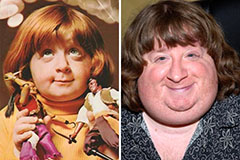ADD and Treatment
ADD and its treatment are often associated with problems at school, work or home. The psychiatric disorder can be difficult for doctors to diagnose and treat.
Attention deficit hyperactivity disorder (ADHD) is the most popular name used for this psychiatric disorder. Mental health professionals use brain imaging using SPECT to diagnose ADHD.
Symptoms include being easily distracted, forgetful and unorganized. Medications like stimulants and antidepressants can help.
Limbic ADD
The most common form of ADD, also known as classic ADD or hyperactive-impulsive ADD, is characterized by inattention, a lack of organizational skills, difficulty staying on task, and trouble with memory. The scans of the brain reveal that people with this type can maintain normal activity during concentration and rest in the prefrontal cortex but they are less active in their cerebellum and basal ganglia. These areas help produce dopamine, which is the neurotransmitter responsible for motivation, calmness, and focus. People with this type have a hard to focus their attention, are easily distracted by noise and other stimuli, and have a short attention span. They have difficulty falling asleep, and they often wake up in the middle of the night, battling anxiety. They often feel overwhelmed by their emotions and have short tempers, and are easily frustrated and easily angered.
Ring of Fire ADD is distinguished by all the typical ADD symptoms, but also by difficulties in shifting their attention from one thought to the next and between tasks. They have a sensitivity to light, noise, and touch and they talk too fast and are impulsive and easily provoked into mean behaviors. They experience periods of depression and fatigue, are easily angered, and get stuck on negative thoughts and guilt feelings.
It is possible to mistake the symptoms of limbic ADD with depression. But it is different in that it boosts activity in the limbic region of the brain at time of rest and during concentration. It is a condition that can be treated using supplements such as L-tryptophan, 5-HTP, saffron, and inositol that improve alertness, focus and mood. They also improve mental clarity. Also, amino acid GABA to regulate neural activity and prevent nerve cells from firing too much or in a erratic manner and liver support.
It is essential to differentiate between ADD and mood disorders such as Bipolar Disorder, which also can trigger irritability, anger and low self-esteem. The difference is that ADD with Limbic Symptoms has a more constant level of irritability and frustration over time, while Bipolar Disorder symptoms tend to manifest in waves.
Overfocused ADD
Over-focused ADD sufferers often get stuck in negative thought patterns and behaviors that cause excessive worry. They exhibit rigid behaviors that are similar to those of people with Obsessive-Compulsive Disorder (OCD), which is why it's often incorrectly diagnosed. People with OCD are often threatened emotionally when they are required to shift their attention from one activity to another, and can react with a threatening or hostile behavior.
They are often angry and their irritability can be caused by a low-grade chronic sadness or negativity. They may also be afflicted by memory issues, feel intense anger, and have a short fuse.
People who have hyper-focused ADD are not flexible when it comes to changing tasks, and can be captivated by their work or interests. They are at risk of missing deadlines at work, and forgetting appointments at home and they might not finish chores or school assignments. They can also be stubborn and resentful when they are reprimanded or chastised by their parents or teacher.
Children with hyper-focused ADD exhibit a high level of irritability and stubbornness, and are likely to throw inconsolable tantrums when their interests are trampled on. They might be obsessed with certain activities like video games, toys, and toys. They also have trouble expressing their emotions and may be extremely sensitive to rejection or criticism.
This form of ADD can be difficult to diagnose, especially in children. These children often don't understand that their issue is due to their inability to switch their focus between different things. It is important to speak with an expert as these children are more likely to be misdiagnosed for ADD. This kind of ADD is usually treated using modifications to diet, supplements and cognitive-behavioral therapy. Some medications are prescribed, but this type of ADD can be difficult to treat using stimulant medications, as these can increase a person's level of hyperactivity. Functional neuroimaging can be used to differentiate between the seven kinds of ADD. It is particularly helpful in diagnosing overfocused ADD.
Anxious ADD
Many people with ADD suffer from a high level of anxiety. This is a comorbidity (having more than one disorder simultaneously) is common, impacting up to half of all sufferers of ADD/ADHD. Stress and anxiety can mimic the symptoms of ADD/ADHD. A misdiagnosis can result in unsuitable treatment and frustration.
Anxious ADD can cause issues at work, in school, or with social situations. This type of ADD can cause underperformance and feelings of unworthiness. People with anxious ADD are hesitant to take on difficult tasks or activities because they fear they won't succeed.
They also fear being criticized or considered a victim. They are afraid of being judged or criticised. others. In some instances, people are so stressed and anxious that they experience panic attacks. These can be dangerous and life-threatening, resulting in a pounding heart, sweating and breathing difficulties. Anxious ADD is distinct from Classic ADD because it has increased activity in the Basal ganglia, as well as the amygdala. These areas are instinctive and prioritize security. This shuts down PFC and can make it difficult for those with this condition to concentrate.
When a person has anxiety and ADD/ADHD their symptoms are more difficult to manage. This is due to treatment strategies for ADD/ADHD which are designed to stimulate the brain could actually increase anxiety in people who suffer from anxiety ADD by decreasing the activity of their PFC.
The psychiatrists at Amen Clinics employ functional neuroimaging, such as SPECT scanning, to determine which areas of the brain are areas of low or high levels of activity. This allows them to differentiate between the seven kinds of ADD and determine the best treatment for each person.
A psychiatrist will take an entire medical record and conduct a physical exam to determine if the patient suffers from ADD/ADHD. In addition, he / she may ask questions about the patient's mood and behavior to evaluate a patient's overall functioning. Some medications are used to treat ADD/ADHD but most patients need other therapies too, including cognitive behavioral therapy, nutrition and exercise, sleep strategies, desensitization, and other relaxation techniques. This will help enhance their ability to control their moods and overall performance.
Temporal Lobe ADD
This type of ADD affects the temporal lobe of the brain which is responsible for memory and mood. This kind of ADD is characterized by a difficulty in learning and keeping information in memory as well as mood instability and extreme anger or aggression. They also often suffer from various sensory issues, such as feeling like they have deja vu, or seeing shadows or objects changing forms and hearing sounds that other people don't hear. They are irritable, sensitive and easily overwhelmed.
This kind of ADD is characterized by similar symptoms to Classic ADD. These include low attention spans and disorganization. It also has difficulties staying focused or following instructions. This kind of ADD is not associated with an excessive amount of impulsivity or hyperactivity. This kind of ADD is more prevalent in women. website This type of ADD is characterised by low levels of dopamine in the brain which can lead to feelings of depression or insufficient self-regulation. The symptoms can include sleep problems and feelings of irritability or anxiety.
In this case, qEEG scans of the ADD brain show that those with Overfocused ADD are having difficulties shifting gears. They have normal activity in the anterior cingulate gyrus (the brain's "gearshifter"). They are unable to move from one thought or task to the next and are stuck in negative thoughts and behavior.
This is a type of ADD where individuals can be highly motivated and hardworking, but they tend to get easily distracted by non-essential or unimportant tasks. They can lose track and feel embarrassed or exhausted due to their actions. They may have a hard relationship with others because they are hyper-active or reactive, and have difficulty managing multiple tasks or working with others. In some instances, they might suffer from depression or anxiety. They could be susceptible to hallucinations or panic attacks. Treatments for this type of ADD are not usually recommended since they don't address the underlying cause of symptoms.
 Tia Carrere Then & Now!
Tia Carrere Then & Now! Mason Reese Then & Now!
Mason Reese Then & Now! Bernadette Peters Then & Now!
Bernadette Peters Then & Now! Pierce Brosnan Then & Now!
Pierce Brosnan Then & Now! Terry Farrell Then & Now!
Terry Farrell Then & Now!